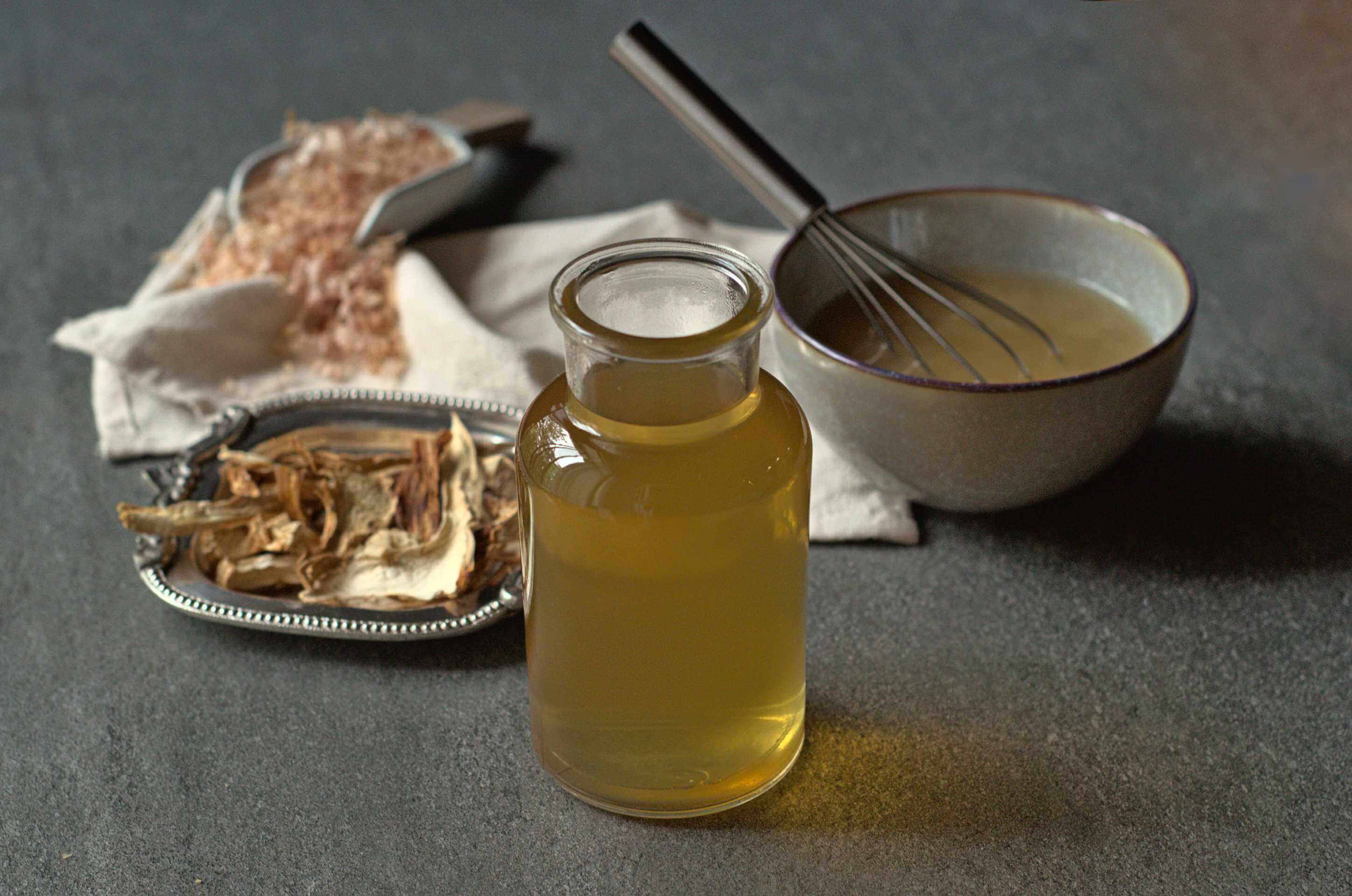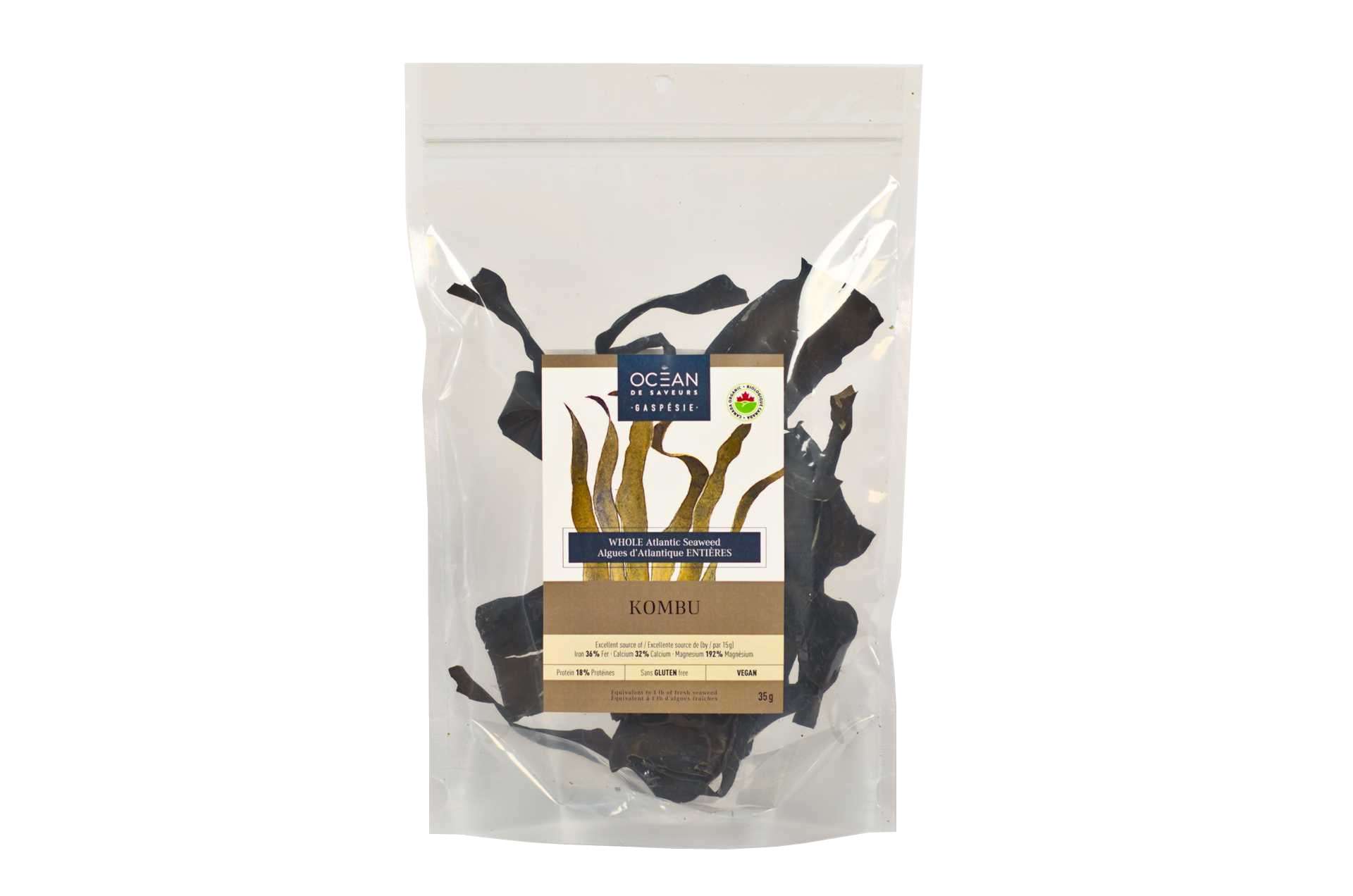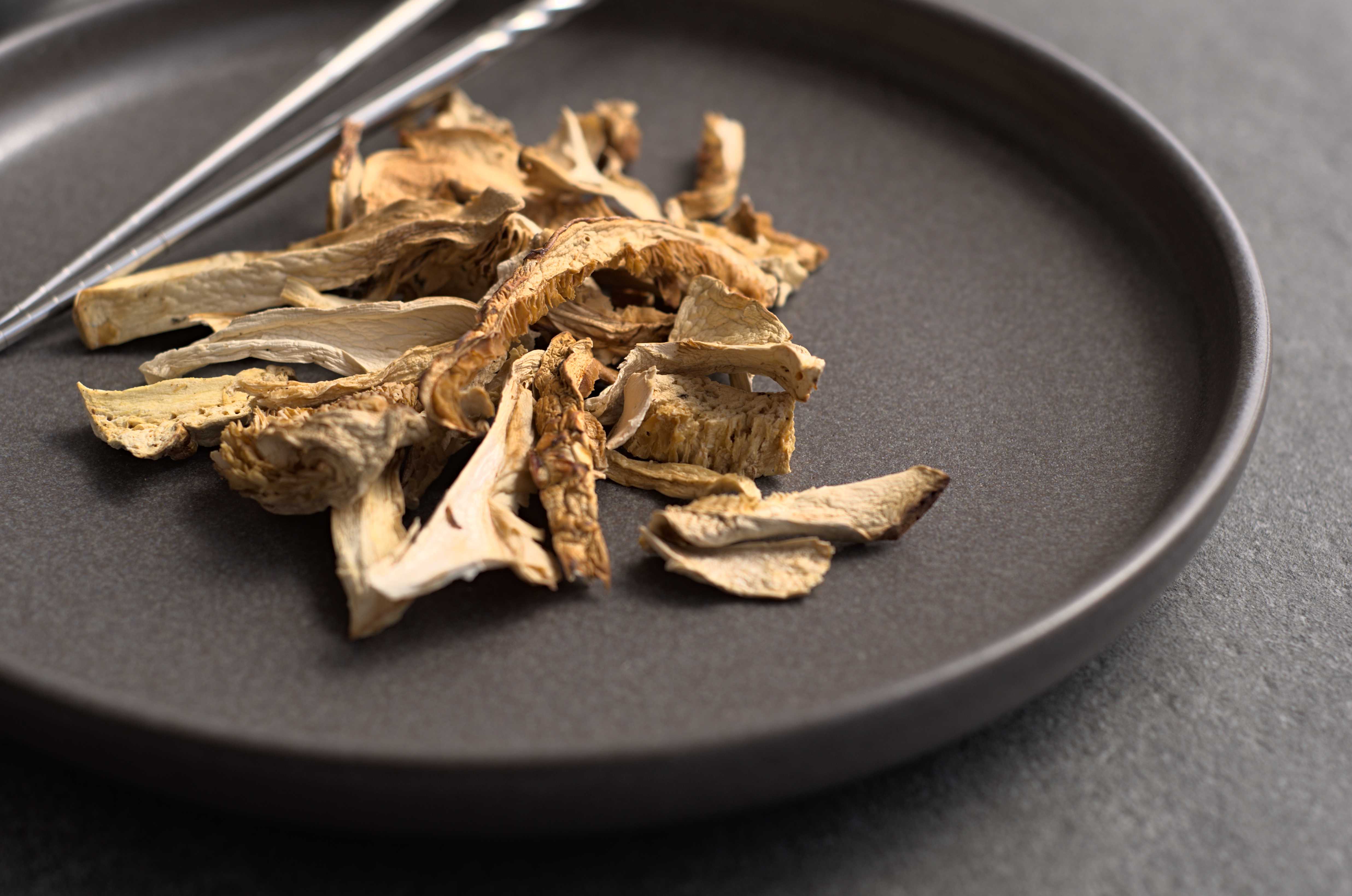Dashi is a type of broth widely used in Japanese cuisine. Traditionally made from seaweed, dried mushrooms and fish (katsuo dashi), there are however many versions (with or without fish, with or without mushrooms, etc.). No matter which recipe you choose, dashi adds delicious umami flavor to many dishes, including many soups. By using local Québec ingredients, it is possible to make a version that's just as tasty, with a more local flavor. With its woody and slightly smoky aromas, the matsutake mushroom, a true champion of our forests, is ideal for our recipe, which follows.
Ingredients
For 1 liter of dashi:
- 1 liter of water
- 10g dehydrated matsutake mushrooms
- 10g bonito flakes* (omit for a vegetarian or vegan version)
- 5 to 10g of organic kombu from Québec
* Bonito flakes can usually be found in Japanese grocery stores and some fishmongers.
Instructions
- Place the water and kombu in a saucepan over medium heat and slowly bring to the boil. As soon as bubbles begin to form in the pan, remove the kombu. If the kombu is brought to a boil, it will become slimy and release bitterness.
- Add the dried mushrooms and bonito flakes and simmer everything for about thirty seconds.
- Turn off the heat and leave to infuse for ten minutes.
- Strain the dashi – the kombu and bonito flakes can be reused to make a secondary dashi (niban dashi), which will be milder tasting. We recommend keeping the rehydrated mushrooms for cooking. Dashi will keep for 3 to 5 days in the refrigerator or up to 2 weeks in the freezer.
How to cook with dashi
- Dashi is the base of any miso soup: all that remains is to add miso, tofu and wakame;
- Dashi makes an excellent broth base for a homemade ramen (we advise you to add the mushrooms that you have rehydrated in the broth as a garnish);
- It can also be used to make an excellent agedashi tofu (fried tofu served in an aromatic broth).
We hope you love this version as much as we do. Please let us know how you used your dashi in the comments below. Enjoy your food!















